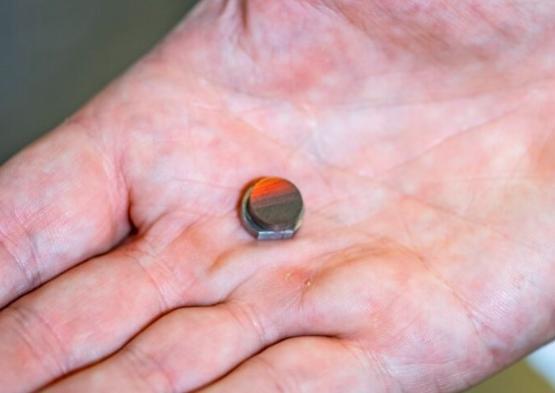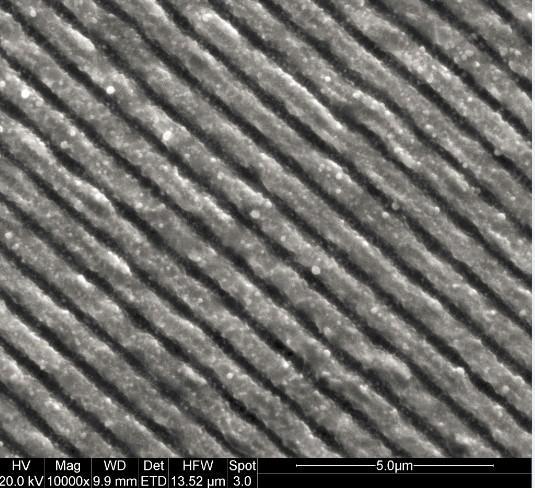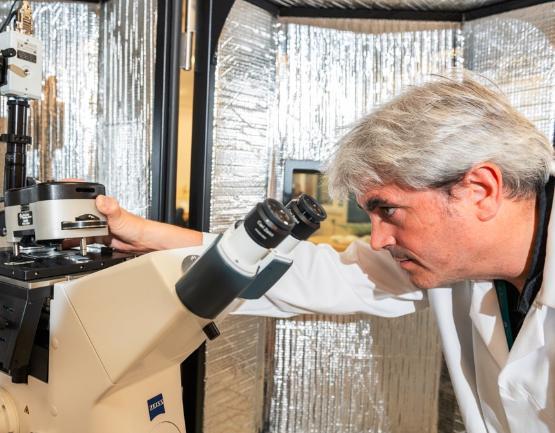Butterfly wing structure could hold key to anti-bacterial surfaces

Butterfly wings could hold the key to creating a range of new anti-bacterial surfaces, according to scientists from the University of Bradford.
The technology could revolutionise hip and other joint replacements, cosmetic and orthodontic products, and even be used in the car industry.
Scientists have created a series of laser-textured nano-moulds to replicate the butterfly wing pattern. The moulds are so finely detailed they have to be viewed using an electron microscope at 10,000-times magnification.

When viewed under a microscope, as pictured above, butterfly wings exhibit a unique ‘ladder’ design that prevents bacteria from establishing colonies and spreading.
The breakthrough could have wide applications for all kinds of products from cosmetics and hip replacements to dentistry and car interiors.
Researchers form the University of Bradford have already worked with Centro Ricerche Fiat (for use in the automotive industry), Albéa (cosmetic packaging), and
Euroortodoncia (orthodontics/dentistry).

Dr Maria Katsikogianni, Assistant Professor in Biomaterials Chemistry at the University of Bradford, pictured above, said: "We are examining patterns with self-cleaning properties found in nature. One of these is found on butterfly wings, which have a tight build-up of cells that resemble ladders close together.
“These not only produce the vibrant colour patterns, almost like a flash of a rainbow when they flutter their wings, but the ladder structure also prevents water from weighing down their wings.
“More interestingly, the structure makes it difficult for bacteria to fit themselves on top of the wings surface and produce communities.”
Dr Katsikogianni said they had examined a number of different anti-bacterial surfaces, including a gecko skin pattern, but the microscopic designs found on butterfly wings is simpler to replicate in the lab and should last longer.
She explained: “Other natural self-cleaning surface patterns were tried, like gecko skin, however, gecko skin is not a long-lasting solution as the pattern wears down just like it does on the gecko which is why it sheds every so often”.
“If we were trying to replicate something like the gecko skin pattern in the lab, it would be challenging to do this with polymers. It would be quite fragile, and it wouldn't last long enough. So, we started thinking more about patterns with a low aspect ratio. That's when I came across the butterfly wings surface pattern.”
Scientists are now in the process of testing whether the butterfly ‘ladder’ design can be replicated onto surfaces for orthopaedic applications, such as knee and hip replacements, and to get closer to knowing whether the design affects bone cell attachment and integration with the human body, with no bacteria build up.

Professor Ben Whiteside, Director of Centre for Polymer Micro and Nano Technology (the Polymer MNT Centre) at the University of Bradford, pictured above, works with Maria to create manufacturing methods to apply the functional surfaces to real-world products.
Working with Professor Stefan Dimov at the University of Birmingham, they have developed a route for incorporating the butterfly wing patterns into mould inserts, using laser-based modules for functional surface structuring and texturing.
This allows the mould insert patterns to be replicated on polymeric components by Professor Whiteside, using injection moulding at the University of Bradford, towards the creation of medical devices, surgical implants or even a wide range of consumer goods, delivering the added functionalities without requiring coatings or chemicals that could add cost and reduce recycling options.
Professor Whiteside said trials with the plastic patterns showed they can successfully reduce bacterial build up on surfaces while still allowing the growth of tissue cells.
He said: “Technologies in laser patterning, digital manufacturing processes and microscopy have reached a point where we are now able to take a nano-scale 3D pattern measured from a natural surface and apply it directly to man-made objects, which is really exciting.
“These nature-inspired cues open paths for improving performance and minimising infection, while reducing costs, plastic waste and the environmental impact of both medical devices and consumer products.”
Prof Whiteside said the technology could have much wider application, for example by creating antimicrobial, self-cleaning, anti-scratch, anti-squeak and aesthetic surfaces for use in the automotive industry, cosmetic packaging and orthodontics.
The research was made possible thanks to a grant from the Medical Device Innovation EPSRC project, which funds research into the creation of new implant surfaces.
